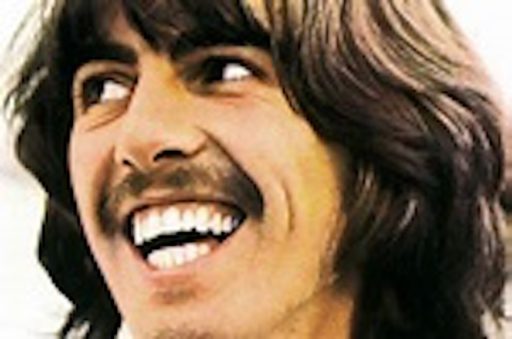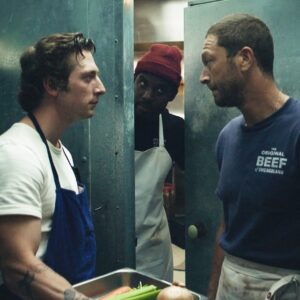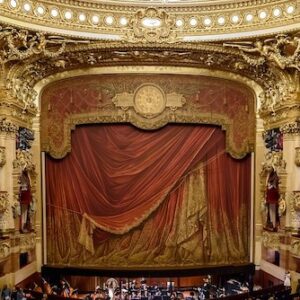I’m old enough to have a favorite Beatle. For those who don’t know what I’m talking about, the Beatles were a band in which the now eighty-year-old Sir Paul McCartney played long before he was knighted by Queen Elizabeth II for his “services to music.” If that doesn’t help, I suggest consulting Google.
My sister was the real Beatles fan in our house while I was growing up. The band’s latest album often blared from the record player in her room at the end of the second-floor hallway. She kept her cache of sleeveless Beatles singles jumbled carelessly together in a drawer when she wasn’t listening to them, a collection that might have fetched a lot of money had not such poor treatment left them heavily scratched and all but unplayable. They were old style 45 rpm records with just enough space for one song per side and a large hole in the disk’s center that needed a plastic adapter to be played on a stereo. If all of this sounds like steampunk technology and ancient history, fear not. None of these details are required for what follows.
My sister’s favorite Beatle was John Lennon, and among her prize possessions is Lennon’s autograph on stationery from the Cincinnati hotel the band stayed in during their 1964 U.S. tour. She was devastated when the band broke up in 1970 and again a decade later when a deranged man murdered Lennon outside his residence in New York City. Her listening habits introduced me to the Beatles, but I came to my own appreciation of them later, listening to reissued LPs and CDs at a temporal remove from the heady days when they and the Rolling Stones ruled the world of rock music. By then, I was listening to U2, Elvis Costello, and the Talking Heads, but I never stopped returning to the lads from Liverpool. That’s how I became a George Harrison fan. Maybe it was his mordant lyrics or his habitual introspection — George was known as “the quiet Beatle” — that won me over, but Harrison’s tracks, rare as they are with John and Paul calling the shots, were more often than not the ones that grabbed my heart and mind.
I revisited all that recently while watching Martin Scorsese’s 2011documentary, George Harrison: Living in the Material World. Over three hours long, the two-part HBO film reconstructs Harrison’s life using photographs, videos, and film clips augmented by interviews with Harrison and the many musicians, producers, and friends who knew him well. Part One covers his Liverpool childhood to the breakup of the Beatles. Part Two traces his career from the creative tsunami of his first independent album, All Things Must Pass, to his 2001 death from throat cancer.
Much is made of his spiritual pursuits, which he claimed were available to anyone despite drawing almost exclusively on esoteric aspects of Hinduism and Krishna Consciousness. Yet if Harrison speaks bitterly of the pre-conciliar, working class Catholicism of his youth, what details he shares of his adopted meditative practice could have been taken directly from The Cloud of Unknowing. Given my own interest in and halting observance of the contemplative life, watching the film raised two nagging questions about Harrison’s spiritual journey. First, Harrison never describes the dark and desolate periods that visit all who observe a practice of inner silence. Though it’s terribly difficult to tease out the motivations for something so personal as one’s prayer life, was he more interested in certain affective experiences — that is, the emotional high of meditation — than embracing the distress and suffering that necessarily follow? Second, while Harrison had diverse spiritual influences that led him, as contemplative practice should, to compassionate action (such as organizing the 1971 Concert for Bangladesh), it’s unclear to what community he and his meditation were accountable: devotees of Paramahansa Yogananda or Marharishi Mahesh Yogi? The Hare Krishnas? Ravi Shankar and friends?
Some early reviewers of the film seemed shocked at passing references to Harrison’s continuing philandering and drug abuse well after his turn to meditation and Indian spirituality, but given what’s known now, the documentary’s tone verges on the hagiographic. For example, Paul McCartney, with whom Harrison had a complex, often strained relationship, suddenly turns diplomatic mid-interview, saying, “I don’t want to say much, because he was a pal, but he liked the things that men like. He was red-blooded.” The movie seems to attribute the collapse of his first marriage to former model Patty Boyd to Harrison’s neglect of her in favor of the spiritual life. Glossed over in the film’s treatment of Boyd’s marriage-ending affair with Harrison’s close friend, Eric Clapton, is that Harrison himself was then engaged in a cocaine-fueled dalliance with the wife of Ringo Starr, his fellow former Beatle and another lifelong friend. “He would meditate for hour after hour,” Boyd later wrote in her memoir, Wonderful Tonight. “Then, as if the pleasures of the flesh were too hard to resist, he would stop meditating, snort coke, have fun, flirting and partying.… There was no normality in that….” Harrison’s second wife, Olivia, speaks obliquely in the film about his “appreciation for women,” how hard it was “to deal with someone who was so well loved,” and how their marriage survived several “hiccups.”
Yet Harrison voiced his regrets in song, wondering, “Isn’t it a pity? / Isn’t it a shame? / How we break each other’s hearts and cause each other pain,” and confessing to “Senses never gratified / only swelling like a tide / that could drown me in the material world.” And when he’s shown speaking of meditative practice or playing sitar with Ravi Shankar, his face radiates with unquestionable joy.
Before I rush to judge others, it’s necessary to pause and remember the struggle each of us wages against our particular besetting demons and that those drawn to contemplative practice are often precisely those most captive to human passions. Should T. S. Eliot’s regrettable turns of anti-Semitism require readers to disavow the entirety of his poetry, drama, and criticism? Do the notoriously messy details of Caravaggio’s life diminish the fraught intensity and theological nuance of his art? It’s said that Evelyn Waugh, when criticized for his often venomous wit and ad hominem savagery, would wonder aloud how much worse he’d have behaved had he not become a Catholic. To the degree so-called “cancel culture” demands all-or-nothing conformity to today’s moral judgments, it blinds its adherents to human complexity and contradiction, as if flawed persons — the only kind I’ve ever met — are immune to wisdom or useful knowledge.
George Harrison lived very much in the material world. Having made a large fortune in music, he owned a rambling neo-gothic mansion, an extensive collection of sports cars, and a feature film production company. Though he was often most content playing music with friends or gardening on his sixty-two acre estate, he was hardly an ascetic nor did he ever seem to escape the overmastering power of his many passions. Yet he wrote beautiful and moving songs, made many dear friends, sought a deeper, more immediate sense of the Divine, had moments of profound compassion, and made a mark in the lives of many. Not a bad life, that.
Brian Volck is a pediatrician and writer living in Baltimore. He is the author of a poetry collection, Flesh Becomes Word, and a memoir, Attending Others: A Doctor’s Education in Bodies and Words. His website is Brianvolck.com





